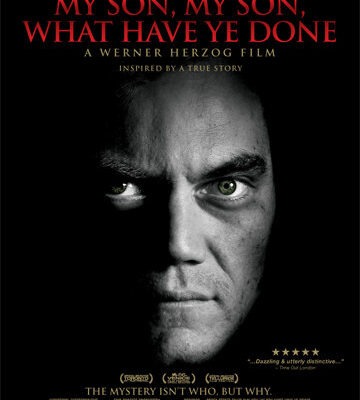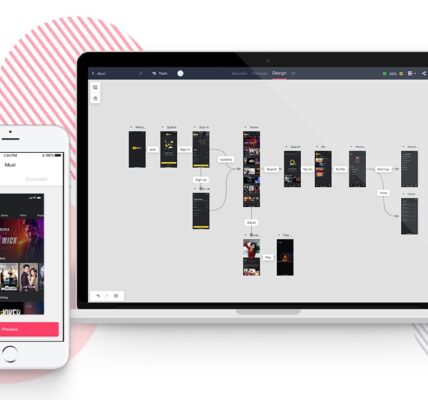The first film I am proposing to make in this way is a science fiction/science fact space adventure that will attempt to take the audience aboard a powerful and participatory adventure. This is now made possible by all-digital technologies, even including computer-controlled model building. I believe we can harness digital technology to reduce cost and increase production value at the same time.
What I am finding in the process of developing this first film is that normal script form is inadequate, and I am using my script more as a sketch that will inform further experiments in how to compose the frame, direct the action, and even consider the effects of allowing actors to look directly into the lens, as I did with the Showscan experimental film New Magic. There, we proved that it is possible to make an illusion that is indistinguishable from reality, and cause the audience to feel that what they are seeing is REAL, happening NOW, and is happening to THEM directly, in addition to conventional cinematic techniques of creating characters, conflict, suspense and empathy, for example.
I am extremely excited about the possibilities, and have built a laboratory/studio on my property here in Massachusetts. Part of the fun is exploring the world of real-time virtual set compositing with live actors. I am working with Paul Lacombe’s company Unreel, who are true pioneers and leaders in virtual production. They are primarily in the broadcast arena, as broadcasters use this technology increasingly for sports, as well as special news and election coverage that must be real-time. What this means to me is that I can shoot my entire sci-fi film on my own stage, and see a live feed of 3D HFR imagery projected onto my own screen right on the stage. In this way I can iterate and explore the potential of this exciting new and immersive medium in real-time. The ultra-high bandwidth data pipeline that enables all this is being headed by media technology consultant Timothy Huber, and he has engaged the best engineering teams and technology from myriad sources such as nVidia, Intel, HP, AIC, Autodesk, Adobe, Codex Digital and many others.
While ‘real-time’ is our mantra, ‘near real-time’ is our fallback. One objective is to transition from a world of CPU-driven (Central Processing Unit) render farms that seem to take forever to complete a frame, to GPU-driven (Graphics Processing Unit) real-time graphics engines by nVidia, allowing us to move on with production extremely fast. This endeavor is catching the eye of many companies who agree, particularly those who enable the real-time graphics of computer games.
The films I have contributed to such as 2001, Close Encounters, Blade Runner, and Star Trek: The Motion Picture, along with my own films like Silent Running and Brainstorm, were all pre-CGI movies, and used extensive miniatures to great effect. This was also true for the ‘Back to the Future—The Ride’ and ‘Luxor Hotel’ attractions. I am not sold on the ‘photorealism’ or expense of pure CGI, so intend to use a lot of miniatures and some CGI to make a more powerful, effective, and less expensive solution. I feel that the miniatures in my films still stand up to the test of time, while many CGI based films do not. We are working with Joe Lewis’ company General Life, and Joe has taken it upon himself to be the final repository of the best of the best motion control gear in the world. He is supplying new and advanced mocon gear, including Kuper Controls, which is more suited to DSLR cameras for miniature photography, since we no longer need those heavy and cumbersome 65mm cameras.
The virtual set/virtual location paradigm allows inexpensive real-time rehearsals that are our version of an animatic. We can previsualise the entire film in a few days to get the bugs worked out. We can do this several times, as we refine the virtual set/location designs, block the action, and record metadata of motion as well as DMX (digital multiplex controlled) lighting cues. We expect that this will lead to a very refined and brief main unit shoot that saves a huge amount of money, while producing a higher quality result. And once that is in the can, we go back and replace some or all of the virtual world with exacting photorealistic models, shooting the same moves that are informed by the mocon metadata recorded during principal photography.
We need an improved workflow in order to create an experience that is far superior to anything we see today. I liken it more to a Holodeck rather than a theater, and want to offer audiences an experience more like going out to see Cirque Du Soleil or a Broadway show. We could convert existing theaters, build new ones, or both. Only through the experience of seeing it, however, will anyone be willing to consider this seemingly outrageous idea. That is why I am planning to shoot a brief scene from my film, finish it, and show it as I intend, right here at our studio on the Torus screen in 3D at 120fps, and 30 fl.
I have always loved making movies, and my philosophy of filmmaking is that everything is an illusion to some degree. Writing, directing, producing, special-effecting and engineering are the challenges that lie ahead for me as we explore the future of cinema as event. Movies are, after all, a very technical art form and, even though sprocketed acetate film has been with us for a long and successful run, new digital technologies are about to unleash myriad opportunities that we must explore immediately. Audiences like big ‘event’, ‘tentpole’, ‘franchise’ movies, and the studios feel comfortable that they can get a good return on their investment by producing and distributing them. Unfortunately the exhibition end has not kept up, throttling very expensive productions through a low frame rate, low bandwidth, low brightness and small flat screen experience in order to get by. The alternative is to embrace new technologies that can unleash those production dollars so the audience can experience what the studios paid for. Every new improvement in resolution, dimension, bit depth, frame rate, color gamut, brightness, screen size, and overall showmanship will hopefully get people to recognize that it makes sense to ‘go out to a movie’, because they simply can’t get that amazing experience any other way.















